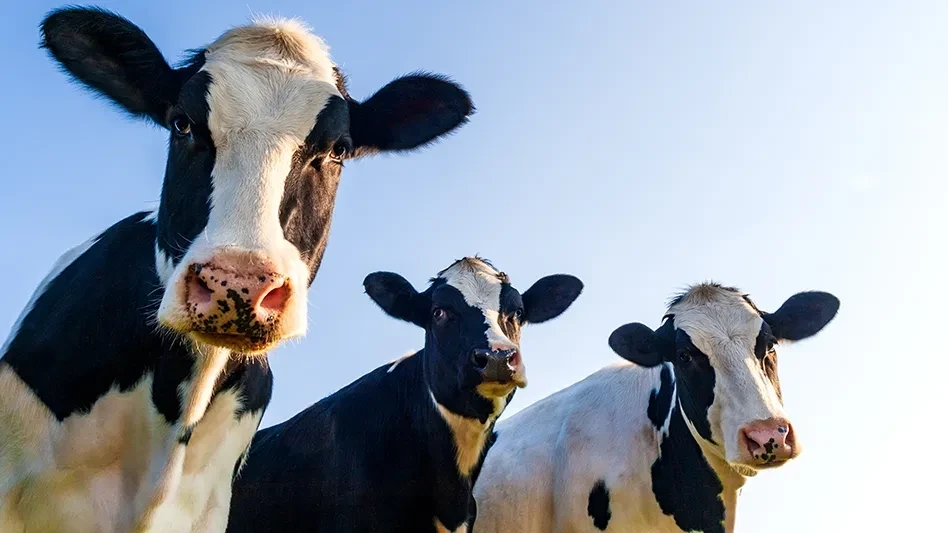
Editor's Note: This article originally appeared in the print edition of QA under the headline "Inveterate Invertebrate Pests of Meat."
When pest control professionals discuss food susceptible to stored product pests, we usually mean grain- and legumes-based products, spices, chocolates and candies, powdered products, etc. However, there are niches within the broad category of stored product pests that are a bit different. Meat, for example, does not usually get mentioned in the same breath as other food and food adjacent products susceptible to stored product pests, but there are pests that have staked (steaked?) their claim.
Not all invertebrate meat pests are stored product pests. The primary distinction comes from those that attack fresh, unprocessed meat versus those that infest cured or processed meats. Pests of fresh and/or unprocessed meats are not stored product pests but use meat as an egg- or larvae-laying site or as a food source for larvae.
FRESH MEAT PESTS. Blow, bottle and flesh flies are known to infest fresh meat. Some will lay eggs or larvae directly onto meat, and the relationship between foodborne illness and these pests is well established. The larvae are decomposers, and adults are often the first insects to locate new carrion and deposit eggs or larvae on it.
Unsurprisingly, meat intended for human or animal consumption also gives off odors that can be strong attractants to these flies and lead to undesired outcomes. (This is particularly true for flesh flies, which deposit much easier-to-see larvae.) For this to happen, meat must be exposed to what are primarily exterior flies, and concurrently, gravid females must detect the odors of that meat, find their way inside and have enough time undisturbed to ovi- or larviposit on the meat.
Wasps in search of protein for larvae will sometimes make use of meat (raw, cooked or carrion), and there is even a residual insecticide labeled for use against yellowjackets when combined with raw chicken inside a special trap that turns the meat into a bait.
Meat does not usually get mentioned in the same breath as other food products susceptible to stored product pests, but there are pests that have staked (steaked?) their claim.
The best approach for pests of unprocessed meat is to try to keep them away in the first place. Practically, this means reducing attraction to the facility by keeping garbage cans and dumpsters as clean as can be while emptying them regularly, stepping up exclusion efforts by keeping doors and windows screened and closed, using air curtains or fans and taking care not to leave meat unattended while exposed.
PROCESSED MEAT PESTS. Over the past 10 to 20 years, there has been, anecdotally, a sharp uptick in problems associated with the redlegged ham beetle, primarily in facilities that produce, store or sell pet food. These problems can become the primary pest issue, even in environments that are susceptible to a lot of pest groups. Redlegged ham beetles are highly mobile, large (1/4 inch long) and visually striking (metallic greenish blue) when compared to other stored product beetles. Both larvae and adults eat meat, particularly dry-aged and smoked meat, but the burrowing larvae are more destructive. Redlegged ham beetle adults are fairly easy to spot, but larvae inside of food or packaging are not. Determining the spread of the infestation can be a challenge in an environment rife with well-spaced pet food and pet treats. Pest control professionals can supplement inspections with commercially available monitors, as well as the tried-and-true method of adding a slice of pepperoni to the middle of a glue board.
Larder beetles are decomposers, and the larvae attack dried foods, carcasses, feathers, meat and meat-containing products like pet food. Eggs are laid on susceptible materials, and larvae feed on or below the surface of their food. Before pupation, last-stage larvae leave their food and wander in search of a protected place to pupate, even burrowing into wooden pallets sometimes.
Cheese or ham skippers are 1/8-inch flies associated with organic waste and are attracted to pungent, putrid odors associated with overripe cheese, cured fish and salted meats like smoked ham. The larval stage is the economically damaging one and the genesis of the common name, as larvae move in a distinctive flipping or skipping fashion. This isn’t a commonly encountered pest, but accounts with infestations can be difficult to solve, and infested hams can contain thousands of larvae. Spilled or leaking grease and bits of susceptible foods in cracks and crevices can be enough to sustain infestations and put valuable product at risk. Identification is crucial, as these small flies can easily be confused with another species.
Mites are 1/32 inch, and their features are difficult to make out. Tyrophagus putrescentiae and T. longiors readily feed on the surface of cheese, grains and cured meat. A combination of inspection, monitoring, ventilation, storage practices, temperature control and, in some situations, targeted use of miticides can be successful.

Explore the March/April 2024 Issue
Check out more from this issue and find your next story to read.
Latest from Quality Assurance & Food Safety
- IDFA Presents Leadership Award to Six Federal Officials at Annual Celebration of Dairy Reception
- Seeding The Future Global Food System Challenge is Changing Lives: Winners Reflections
- Raw Farm Products Recalled Following Bird Flu Virus Detections
- FDA Issues 2024 Voluntary National Retail Food Regulatory Program Standards
- GSA Launches Assurances Platform, Prism and Webinar Series in Partnership with Wholechain
- Multistate E. coli Outbreak Linked to Iceberg and Romaine Lettuce Blend
- FDA, USDA Seek Information About Food Date Labeling
- William Marler, Food Safety Advocate and Lawyer, Condemns Lack of Safety of U.S. Food Supply





